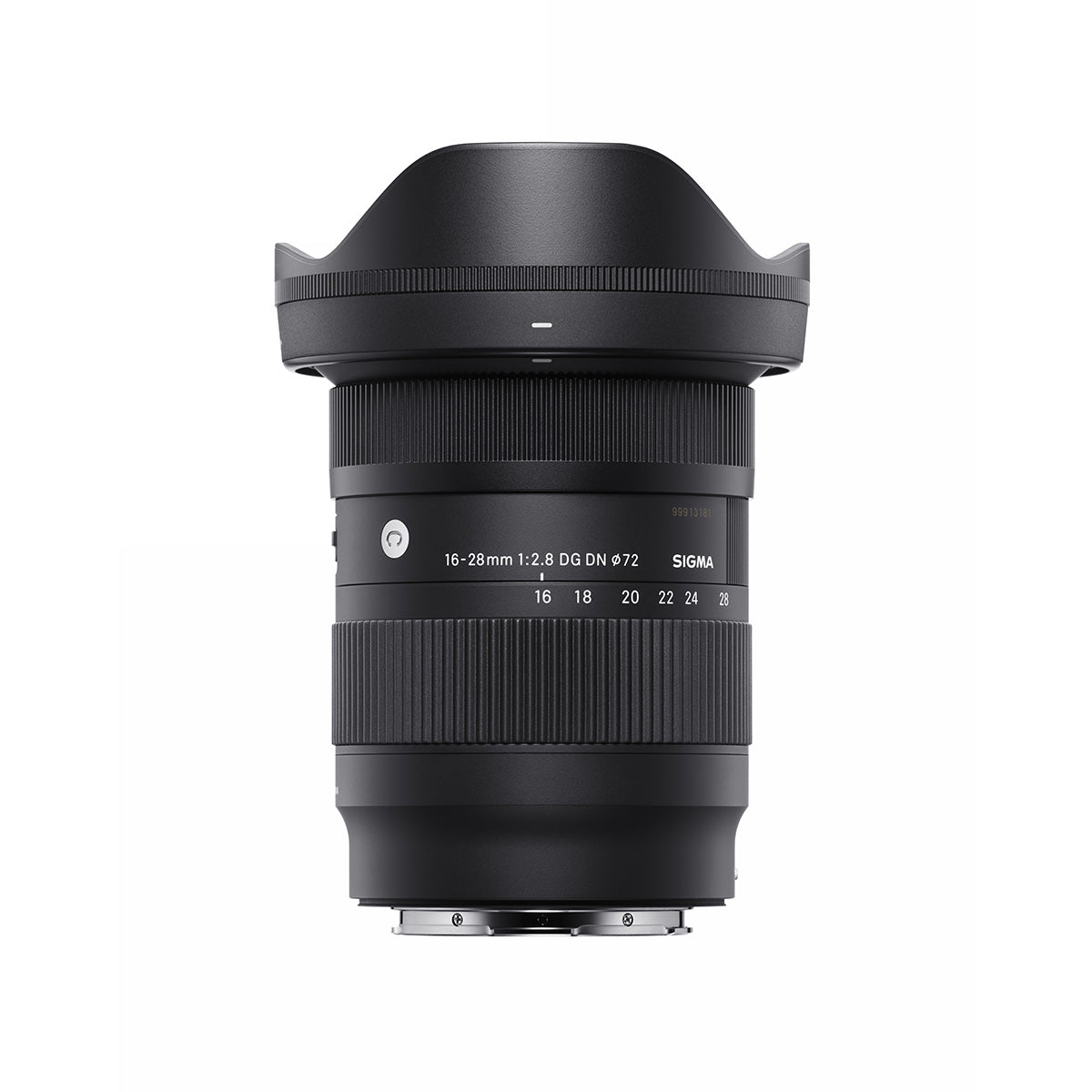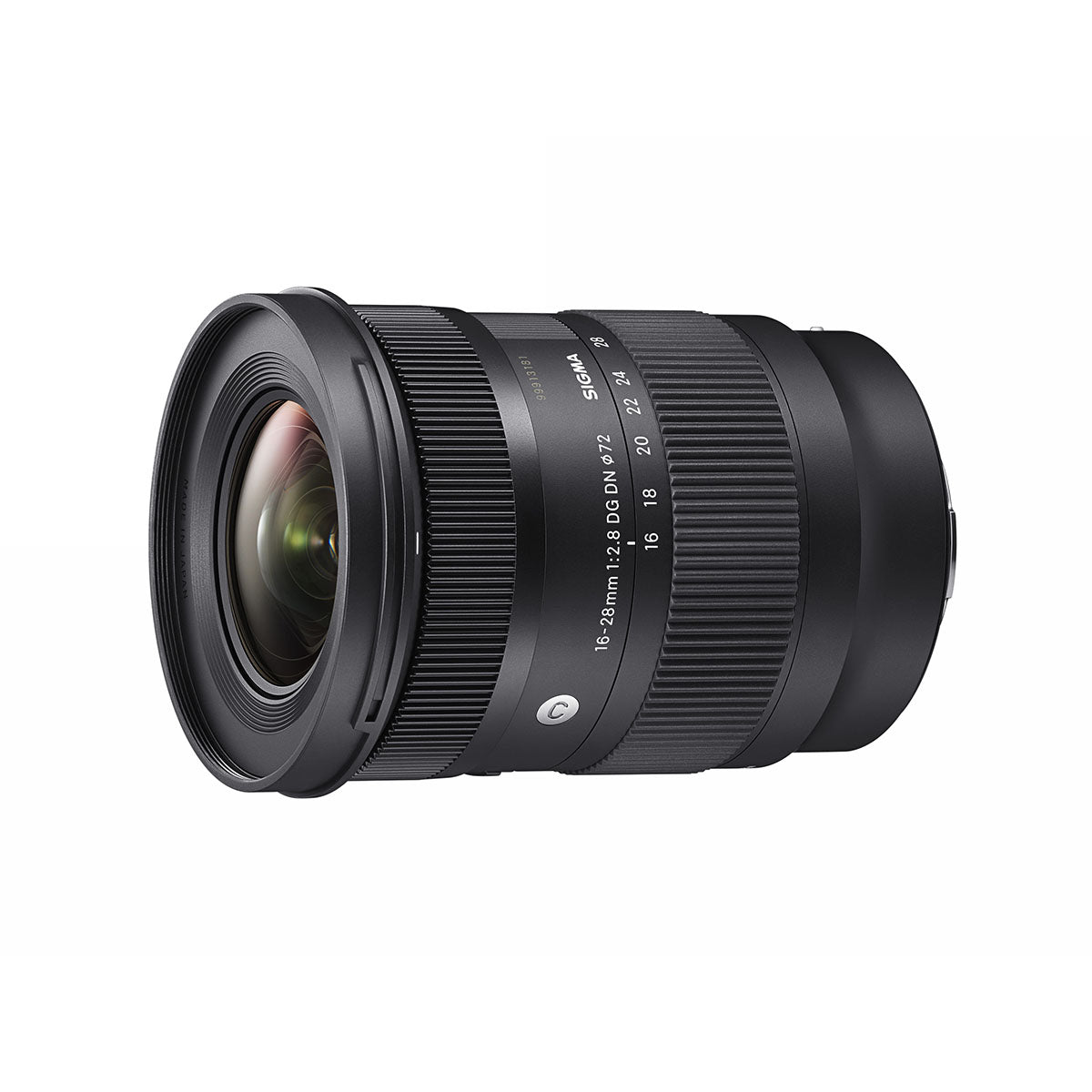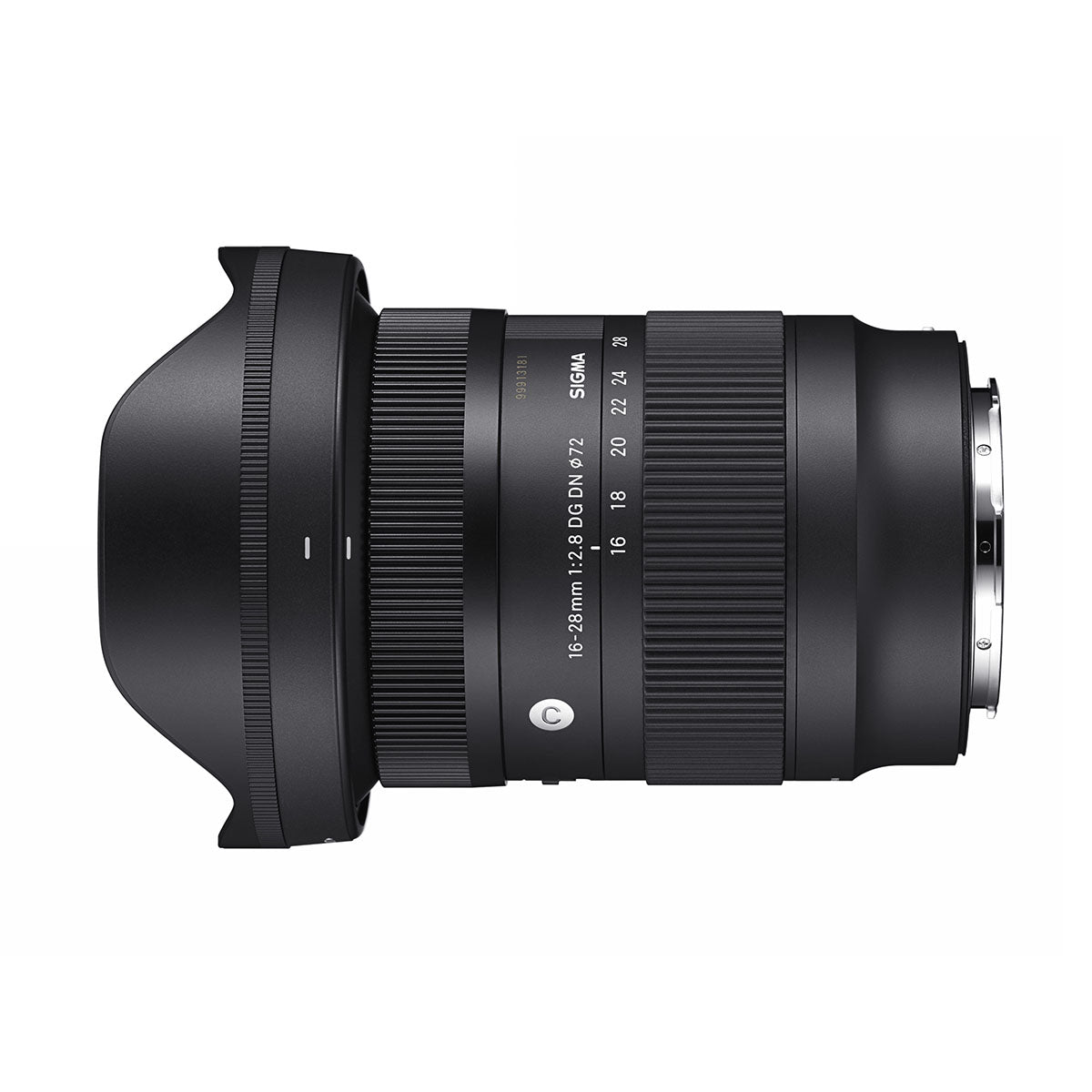What we think...
Product Description
Introducing the Sigma AF 16-28mm F2.8 DG DN Contemporary - L Mount Lens
Discover the pinnacle of compact ultra-wide zoom photography with the Sigma AF 16-28mm F2.8 DG DN Contemporary Lens, boasting a constant f/2.8 aperture for unparalleled performance.
Sigma's Most Compact Ultra-Wide Zoom Yet: Step into the world of ultra-wide-angle photography with Sigma's award-winning 16-28mm F2.8, specially designed for full-frame mirrorless cameras. Perfect for capturing breathtaking landscapes, elegant weddings, intricate interiors, and striking architectural shots, this lens delivers exceptional optical performance while maintaining a compact form factor. Weighing a mere 450g and measuring just 100.6mm in length, it's the epitome of portability without sacrificing optical excellence.

Unmatched Optical Precision
Engineered with cutting-edge optical design technology, the 16-28mm lens achieves unparalleled sharpness across the entire frame with minimal aberrations. Its internal zoom mechanism ensures consistent length throughout the zoom range, maintaining a steady centre of gravity ideal for gimbal use. Plus, attaching filters is a breeze thanks to the conveniently located filter thread around the front element.

Award-Winning Recognition
Recognized for its outstanding quality, the Sigma 16-28mm F2.8 DG DN lens clinched the prestigious titles of Best Wide-Angle Zoom Lens at the TIPA Awards and Wide-Angle Zoom Lens of the Year at the AP Awards in 2023.

Features and Construction
Crafted with a Thermally Stable Composite (TSC) exterior barrel, the lens combines lightweight durability with a premium finish for a sleek aesthetic. Its internal zoom and focus mechanisms ensure consistent length and non-rotating front elements, making it perfect for filter use and gimbal stability. The lens's stepping motor delivers swift, precise autofocus for both stills and video, while the brass mount with a rubber seal provides robust protection against dust and moisture.

Superior Optical Performance
Despite its lightweight construction, the 16-28mm F2.8 DG DN lens delivers exceptional optical quality even on high-resolution sensors, ensuring sharpness and detail from corner to corner. With an advanced optical design featuring 16 elements in 11 groups, including aspherical and FLD elements, chromatic aberration, distortion, and vignetting are effectively minimized, while advanced coatings reduce flare and ghosting for pristine image quality.

Perfect for Every Scenario
With its wide maximum angle-of-view of 107° and constant bright maximum aperture of F2.8, the lens excels in capturing expansive interiors and landscapes with stunning detail and clarity. Its compact and lightweight design makes it an ideal companion for photographers on the move, offering versatility without compromise.
The Sigma 16-28mm F2.8 DG DN Contemporary Lens is the ultimate choice for photographers seeking uncompromising optical quality in a compact, lightweight package.


Payment & Security
Your payment information is processed securely. We do not store credit card details nor have access to your credit card information.






















